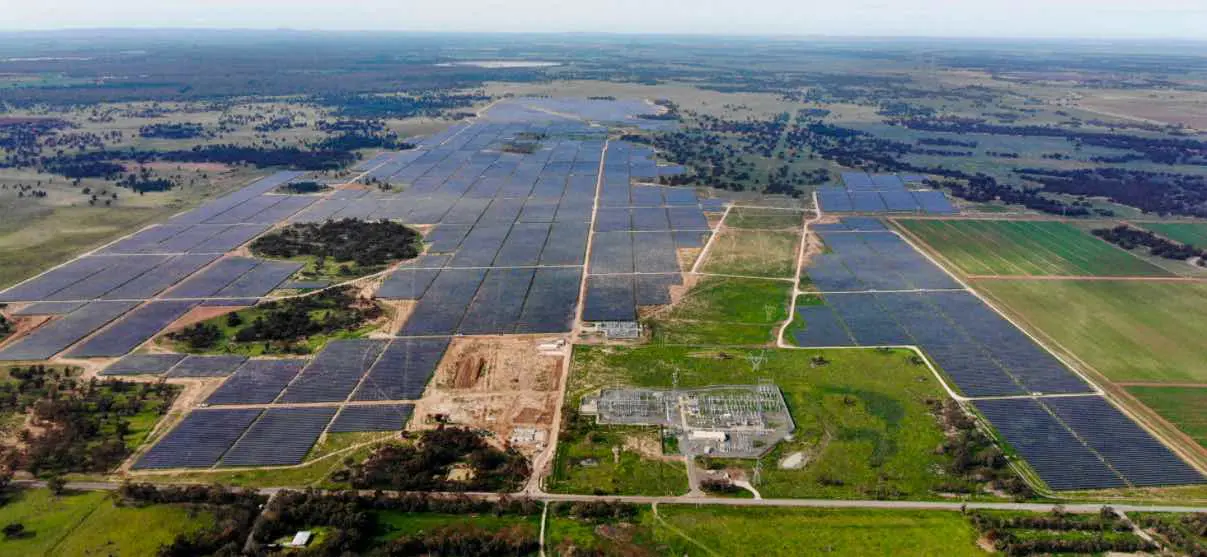
Renewable energy investment firm Octopus Investment Australia has officially launched a target $10 billion investment platform which it plans to use to finance large solar, wind and battery storage projects.
The Australian subsidiary of one of the world’s largest investors in clean energy – UK-founded Octopus Group – plans to raise the $10 billion over five to ten years. Octopus has already started investing, including buying the largest operating solar farm in Australia.
Octopus Australia announced on 20 July that it had closed, fully subscribed, two funds that are co-investing in building the multi-billion-dollar Australian renewable energy portfolio.
The funds are the Octopus Australia Sustainable Investments (Oasis) Fund, which is open to institutional investors only, and the Octopus Renewable Energy Opportunities (Oreo) Fund, which is open to wholesale investors.
Institutional investors that have committed to the Oasis fund to date include the federal government-financed Clean Energy Finance Corporation (CEFC) and superannuation fund Hostplus.
According to Octopus, the secured portfolio is currently valued at $3 billion across wind, solar and storage with another $5 billion of investments in the pipeline.
Last year, Octopus and the CEFC bought the development rights for two large-scale solar and battery storage projects proposed for development in Gippsland in eastern Victoria, the 44MW Perry Bridge and 80MW Fulham solar farms, and a separate project, the Gippsland Renewable Energy Park.
In March, Octopus and the CEFC announced they would invest in the development of the 300MW Blind Creek solar and battery project near Bungendore, NSW.
The Octopus funds’ first jointly acquired asset, the 333MW Darlington Point Solar Farm in south-east New South Wales, is so far Australia’s largest operational solar project.
Octopus is expected to provide information on its next Australian acquisition shortly.
Octopus Australia managing director Sam Reynolds said: “The Octopus Group’s approach to investing in renewable energy has developed globally over the last 15 years. As such, we saw early on the massive opportunity in Australia and how a portfolio approach to the market could align our institutional customers [in Oasis], alongside our family office and advised investors [in Oreo] to create defensible and sustainable value into the future.”
According to Reynolds, Octopus is looking at wind, solar and storage opportunities, and at investing at different stages: developing, constructing and operating. At the operating level it also plans to achieve a mix of assets including some that have long-term fixed price offtake contracts and others that will be free to supply power at market prices.
CEFC executive director Monique Miller said the corporation’s $75 million cornerstone commitment to the Oasis fund was addressing the need for new investment in utility-scale renewable energy projects and helping bring in a major new international player to the Australian market.
“It’s also great to be making the investment alongside key superannuation funds, showing the strong opportunity for institutional capital to supply the ongoing demand for exposure to renewable energy investment,” she said.
Hostplus chief executive David Elia said his fund was especially interested in backing projects by Desert Springs Octopus, a partnership between Octopus and the Northern Territory Indigenous Business Network (NTIBN) launched in February to develop renewable opportunities for First Nations communities.
“Importantly, this opportunity further diversifies our portfolio, an important aspect in the delivery of sustainable long-term returns for our members,” he added.
Image: Darlington Point Solar Farm, currently Australia’s largest operating solar energy project.

